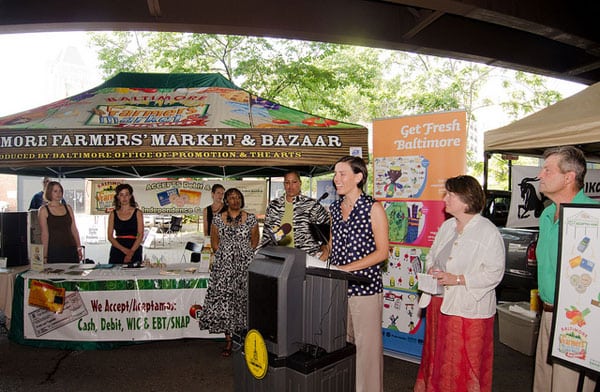
September 14, 2018; Next City
Holly Freishtat began her career in food policy more than eight years ago. As the leader of the Baltimore Food Policy Initiative, she has spent the last few years collaborating with Johns Hopkins University’s Center for Livable Future to change the perception of “food deserts” and finding ways to make systemic change.
Working with local residents and politicians, the partnership has pushed for innovative policy and initiatives around food access, and begun to change the very terminology of how the city of Baltimore talks about food deserts.
The US Department of Agriculture (USDA) defines food deserts as “parts of the country vapid of fresh fruit, vegetables, and other healthful whole foods, usually found in impoverished areas, largely due to a lack of grocery stores, farmers’ markets, and healthy food providers.” In 2018, the term “food desert” was changed to “healthy food priority area.” Why was changing the phrasing so important? To better characterize what is being measured and to recognize that there is a suite of structural elements shaping Baltimore’s food system.
Sign up for our free newsletters
Subscribe to NPQ's newsletters to have our top stories delivered directly to your inbox.
By signing up, you agree to our privacy policy and terms of use, and to receive messages from NPQ and our partners.
As quoted in Next City, Freishtat states, “We had been hearing from advocates and residents that ‘food desert’ assumes it’s naturally occurring when it’s not; it’s a social condition.”
Along with changing the terminology, they relied heavily on data to inform the strategies used to address Healthy Food Priority Areas. It’s common for this collaboration to use mapping and data analysis, and now they have added a new set of data: resident feedback and engagement. The partnership collaborated with council members in each council district, asking them to identify residents to serve as “resident food equity advisors.” As a part of this model, 14 residents visited corner and convenience stores in their communities to see whether or not healthy food was available. The results suggest that over 700 corner and convenience stores scored low in healthy food availability. The resident advisors were educated on food access issues and consulted on recommendations on how to bring healthy foods to their local corner stores.
Quantitative and qualitative data collection have helped this partnership develop a sound strategy to address a wicked, complex problem. Their ability to provide sound data through research has made them a reliable source for elected officials, including Mayor Catherine Pugh, and ensures that they have a seat at the table when policies are being created. The partnership between Baltimore Food Policy Initiative and the Johns Hopkins Center for Livable Health shows the power of data and the power of collaboration.—Diandria Barber













